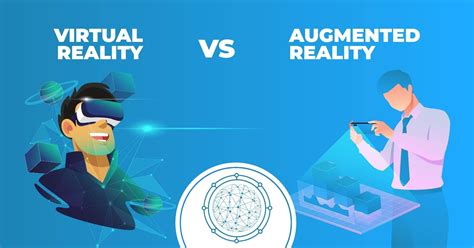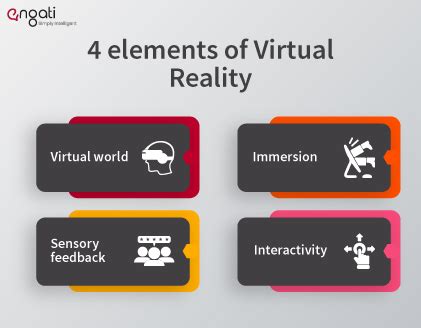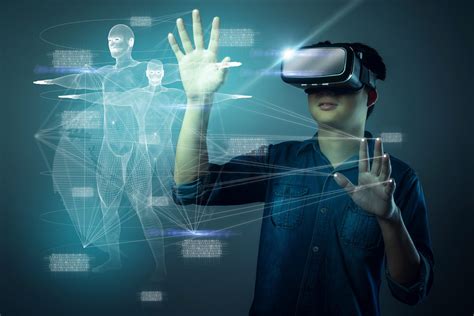Breaking News


Popular News


Discover the key differences between augmented reality and virtual reality, their definitions, key features, and practical applications. Understand the technology behind the future.Augmented Reality (AR) and Virtual Reality (VR) are two innovative technologies that have been making waves in recent years. While they are often mentioned in the same breath, it’s important to understand that they are not the same thing. In this blog post, we will delve into the key differences between AR and VR to help you better understand these exciting technologies and their potential applications.
We will begin by defining what Augmented Reality and Virtual Reality actually are, exploring their key features, and then delving into their respective applications in various industries. Whether you’re a tech enthusiast, a business owner looking to incorporate these technologies, or simply curious about the potential impact of AR and VR, this post will provide you with a comprehensive overview of these cutting-edge technologies. So, let’s dive in and unravel the world of AR and VR!
Contents

Augmented Reality (AR) is a technology that superimposes a computer-generated image on a user’s view of the real world, thus providing a composite view. The key feature of AR is its ability to interact with the real world and enhance it with virtual elements.
AR technology allows users to experience a blend of the physical and virtual world, providing an immersive and interactive experience. It is often used in applications such as gaming, entertainment, education, and training, offering users a unique and engaging experience.
The definition of AR includes the use of devices such as smartphones, tablets, and AR glasses to overlay digital information onto the physical environment. This technology has the potential to revolutionize various industries by creating new opportunities for customer engagement, product visualization, and interactive experiences.
In summary, Augmented Reality is a technology that enriches the real world with virtual elements, providing users with an enhanced and interactive experience. It has the potential to redefine the way we interact with the world around us and has numerous applications across various industries.

Virtual Reality (VR) refers to the use of computer technology to create a simulated environment. In this environment, the user is able to interact with the artificial world through a special headset or goggles. The user’s physical presence in the real world is replaced by the digital environment, allowing them to explore and manipulate objects in a 3D space.
One of the key aspects of virtual reality is the sense of immersion that it provides. Users feel as though they are actually present in the virtual environment, thanks to the use of specialized hardware and software. This sense of presence is what distinguishes VR from other forms of digital interaction.
Another defining feature of virtual reality is the ability to interact with the environment. Users can often manipulate objects, move around, and perform actions within the virtual world, creating a highly interactive and engaging experience. This level of interactivity sets VR apart from traditional media formats, such as books or movies.
In summary, virtual reality can be defined as a digital simulation of an environment that allows users to interact with and explore a 3D space. The use of specialized hardware provides a sense of immersion and presence, making VR a unique and compelling form of digital experience.

Real-time Interaction: One of the key features of augmented reality (AR) is the ability for users to interact with digital elements in real-time. This means that users can view and manipulate virtual objects overlaid onto the real world environment, creating an immersive and interactive experience.
Integration with Physical Environment: AR technology is designed to seamlessly integrate digital content with the physical world. This means that virtual objects appear to exist in the same space as real-world objects, enhancing the user’s perception and interaction with their surroundings.
Enhanced Visualization: AR enhances visualization by overlaying digital information onto the real world environment, providing users with additional context and information. This feature is particularly useful in fields such as education, healthcare, and navigation, where additional visual cues can improve understanding and decision-making.
Contextual Awareness: Another key feature of AR is its ability to adapt to the user’s context and environment. AR applications can recognize and respond to the physical world, providing relevant information and experiences based on the user’s location, movement, and surroundings.

Virtual reality (VR) is a technology that allows users to interact with a computer-generated environment in a way that mimics real-life experiences. One of the key features of VR is its ability to create an immersive and interactive environment that is highly realistic. This is achieved through the use of specialized hardware such as VR headsets and gloves, as well as VR software that is designed to create the illusion of being in a different world.
Another key feature of virtual reality is its ability to provide users with a sense of presence in the virtual environment. This means that users feel as though they are actually inside the virtual world, rather than just observing it from a distance. This is accomplished through the use of 3D audio and visual effects, as well as haptic feedback devices that create a sense of touch and motion within the virtual environment.
In addition to providing a highly immersive experience, virtual reality also offers users the ability to interact with the virtual environment in real-time. This means that users can manipulate objects, navigate through the virtual world, and even communicate with other users in the virtual environment. This level of interactivity sets VR apart from other forms of media and entertainment, and makes it a unique and compelling technology for a variety of applications.
Virtual reality also has the ability to transport users to completely new and different worlds, allowing them to explore places that they may never be able to visit in real life. This can include anything from historical landmarks to fictional fantasy worlds, and everything in between. This feature of VR opens up countless possibilities for education, entertainment, and even therapy, making it an incredibly versatile and powerful technology.

Augmented Reality (AR) technology has a wide range of applications across various industries. One of the most popular applications of AR is in the field of education. AR technology can be used to create interactive and immersive learning experiences for students, making the learning process more engaging and effective. In addition to education, AR also has significant applications in the healthcare industry. Surgeons can use AR technology to visualize patient anatomy in real time during surgical procedures, leading to more precise and successful operations.
Another key application of Augmented Reality is in the retail and marketing sector. Many businesses are using AR to enhance the shopping experience for customers by allowing them to virtually try on clothing and accessories before making a purchase. Moreover, AR can also be utilized in the field of architecture and design, enabling architects and designers to visualize and showcase their projects in a more interactive and realistic manner.
Furthermore, AR technology is being increasingly used in the entertainment and gaming industry. AR games and apps have gained popularity due to their ability to merge the virtual world with the real world, creating a more immersive and interactive gaming experience for users. Additionally, AR has applications in the field of tourism, where it can be used to provide interactive and informative experiences for travelers by overlaying digital information onto real-world landmarks and attractions.

What is augmented reality?
Augmented reality (AR) is an interactive experience of a real-world environment where the objects that reside in the real world are enhanced by computer-generated perceptual information, sometimes across multiple sensory modalities, including visual, auditory, haptic, somatosensory and olfactory.
What is virtual reality?
Virtual reality (VR) is a simulated experience that can be similar to or completely different from the real world. Applications of virtual reality can include entertainment and educational purposes.
What is the main difference between augmented reality and virtual reality?
The main difference between augmented reality and virtual reality is that AR adds digital elements to a live view often by using the camera on a smartphone or other device, while VR implies a complete immersion experience that shuts out the physical world.
How are augmented reality and virtual reality being used in the real world?
Augmented reality is being used in mobile gaming apps, social media filters, and in retail for virtual try-on experiences. Virtual reality is being used for immersive training simulations, gaming, and in the field of medicine for pain management and therapy.
Which industry benefits most from augmented reality?
The gaming and entertainment industry benefits the most from augmented reality as it enhances the overall gaming experience and provides users with interactive and engaging content.
Which industry benefits most from virtual reality?
The healthcare and education industries benefit the most from virtual reality as it provides immersive training and educational experiences for students and medical professionals.
Are there any limitations to augmented reality and virtual reality?
One limitation of augmented reality is the dependency on a compatible device and software, and for virtual reality, it is the potential for motion sickness and limited physical movement while immersed.